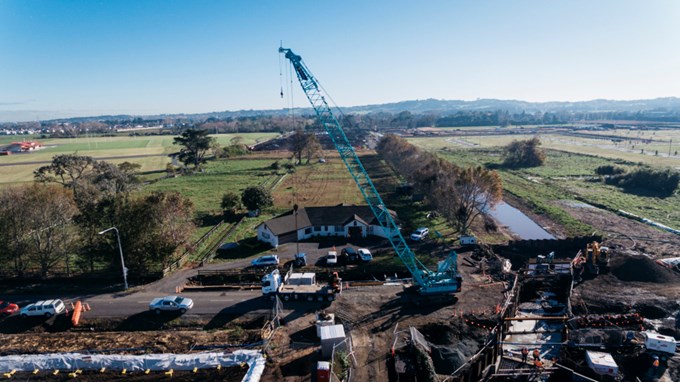Auckland has a housing shortfall and despite the Unitary Plan zoning allowing for more than one million new dwellings in existing (brownfield) urban residential areas, pressure to develop previously undeveloped (greenfield) land is strong.
However, there are huge infrastructure costs in opening up greenfield land, which are routinely ignored by many proponents of large-scale greenfield development, says Auckland Council Chief Economist David Norman.
Auckland’s housing shortfall is at least 46,000 dwellings as a result of exceptional population growth and few new dwellings being built in the wake of the Global Financial Crisis. Only in late 2018 did annual new dwelling consents begin to balance with population growth, and it has yet to eat into the shortfall.
The Unitary Plan, which became largely operative in November 2016, rezoned the city to allow for one million additional dwellings - almost twice as many dwellings as currently exist in Auckland. Recent consenting data shows that this is working, with more than 90 per cent of dwellings being consented within Auckland’s Rural Urban Boundary.
Yet critics argue that this is a planning response from an ideological council opposed to greenfield growth. This ignores pragmatic reasons for favouring a compact city, not least of which is that developing greenfield land is eye-wateringly expensive and requires a staged approach to ensure adequate funding.
The separate Future Urban Land Supply Strategy allows for the staged development of around 140,000 greenfield dwellings over 30 years, with an estimated cost of council-provided infrastructure and central government-funded transport infrastructure at $21 billion (or about $140,000 per dwelling). Developers typically contribute less than one third of this cost through development contributions and infrastructure growth charges, with the rest subsidised by the ratepayer and the taxpayer.
"Developing greenfield land is eye-wateringly expensive, requiring a staged approach to ensure adequate funding," Auckland Council Chief Economist David Norman.
There is also little discussion of the negative consequences of expansive growth, including reduced financial viability of public transport relative to compact development (which means higher transport costs for everyone), increased congestion (and more carbon emissions), and sub-optimal use of existing infrastructure.
In reality, the more housing we can get close to jobs, existing public transport and other amenities, the better, as travel times are reduced and existing infrastructure is better utilised.
Yet central and local government face constant pressure to accelerate the delivery of infrastructure in greenfield areas, with big subsidies to land owners. The rationale is that this infrastructure will help ‘live-zone’ more land and thus speed up the delivery of housing. When the council expresses concern at this approach that would require much larger rates increases, this is usually labelled as ‘anti-growth’ ideology. In reality, it is the absence of funding, and an acknowledgement that it is unreasonable for existing ratepayers to pay for windfall gains to land owners.
Simply zoning for more development (upzoning) with the promise of coming infrastructure, yields significant relative land value gains to the owners of upzoned land, without necessarily delivering much more housing.
Where is the win for Auckland in this? There must be some requirement on developers to actually deliver the land to the retail market if they are benefiting from accelerated infrastructure provision. If central and local government commit to accelerate greenfield infrastructure at a developer’s request, the developer agreement should require the land to be sold on the retail market within a set time of the infrastructure being provided.
Towards a better model
An exciting improvement on the status-quo is the new Milldale development, where central government and Auckland Council have stumped up more than $80 million to deliver infrastructure sooner than would otherwise be the case. It will enable more than 8,000 new homes, with infrastructure expedited by a targeted rate-like infrastructure levy.
Targeted rates have many advantages over development contributions. They can be levied immediately, provide certainty over when the costs for infrastructure will be recouped, and provide some incentive to the landowner to bring land to market sooner.
In short, infrastructure is expensive, and the staging of greenfield growth is inescapable. If we want more actual housing delivered, a requirement to deliver land to the retail market within a strict timeframe must be applied to developer agreements. Only then can central and local government confidently provide infrastructure knowing that it will be used to support real housing growth in the short to medium-term.
Chief Economist David Norman’s full Economic Quarterly for February can be read here.


